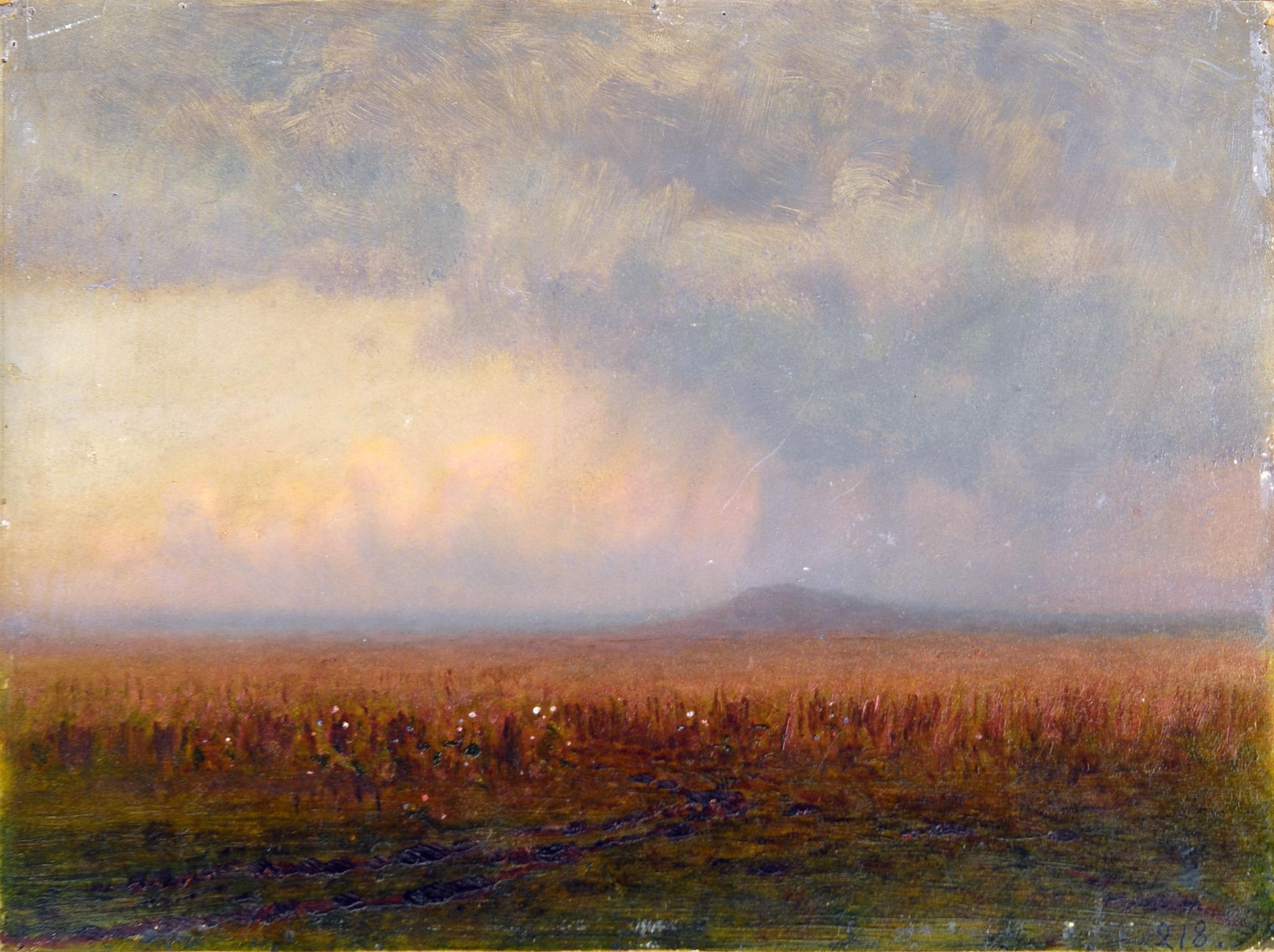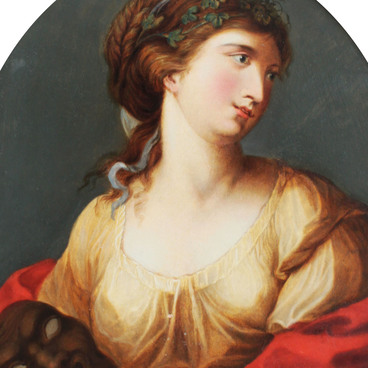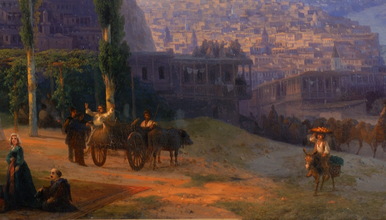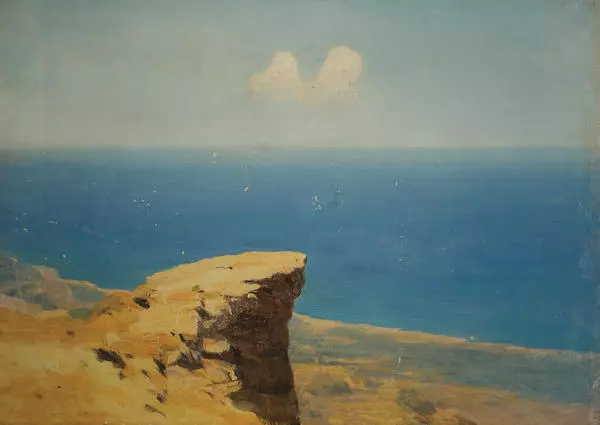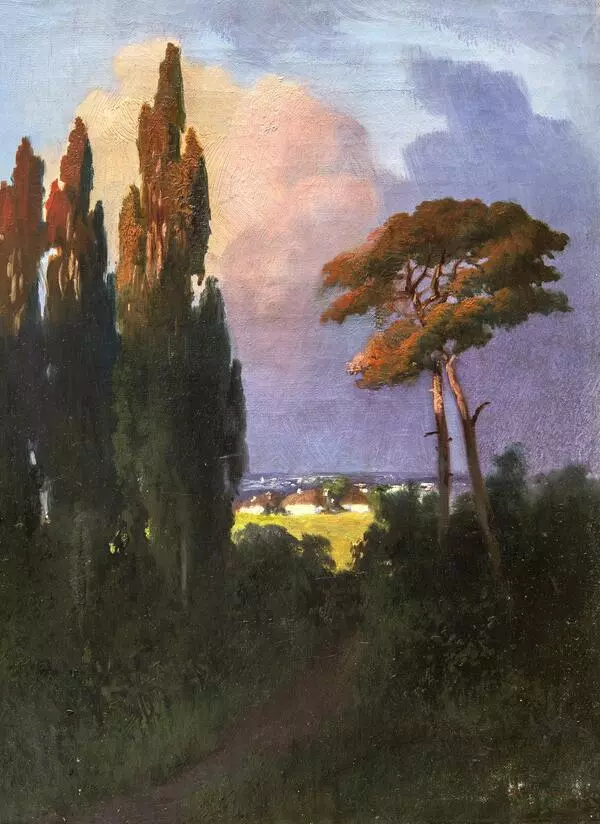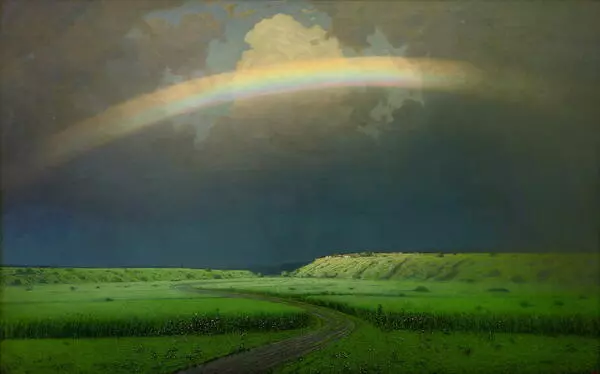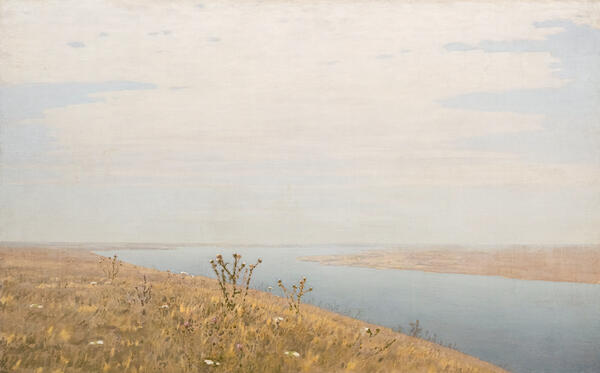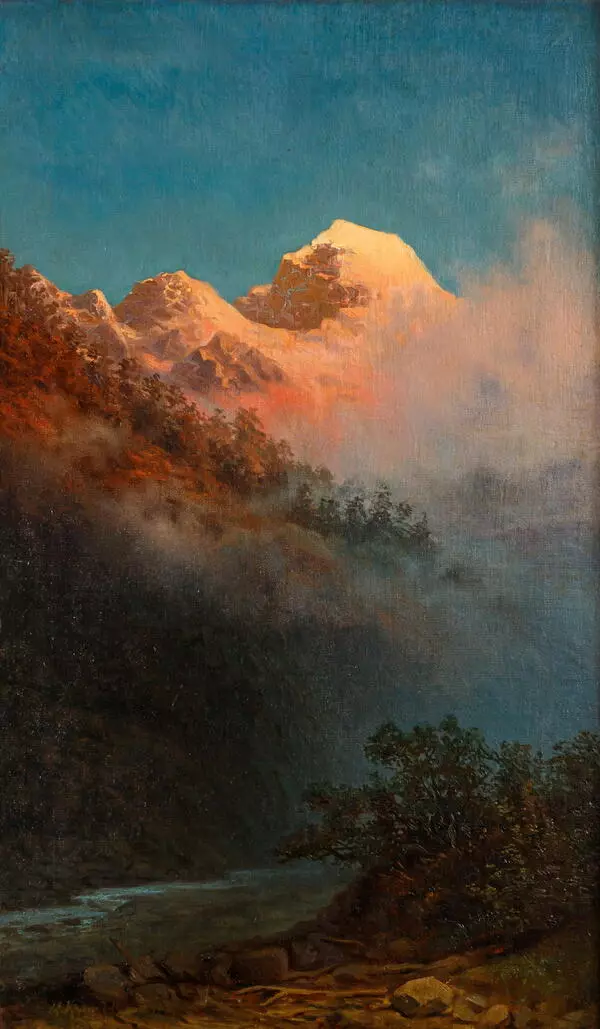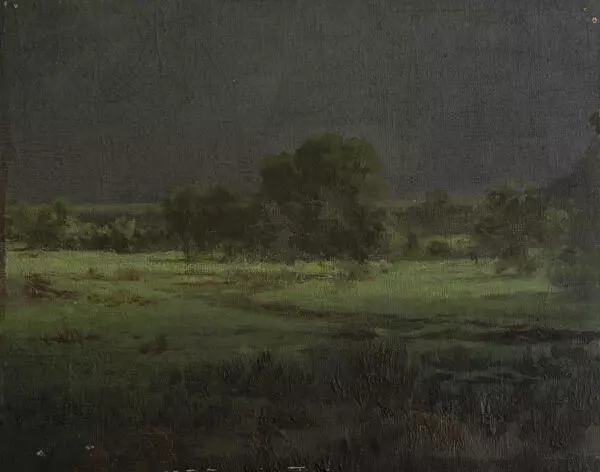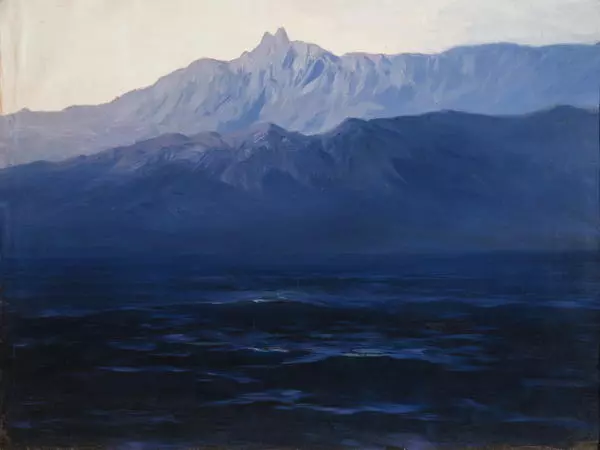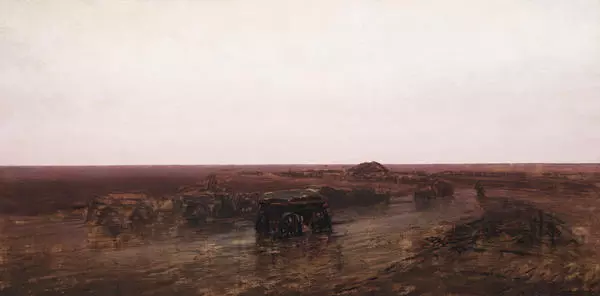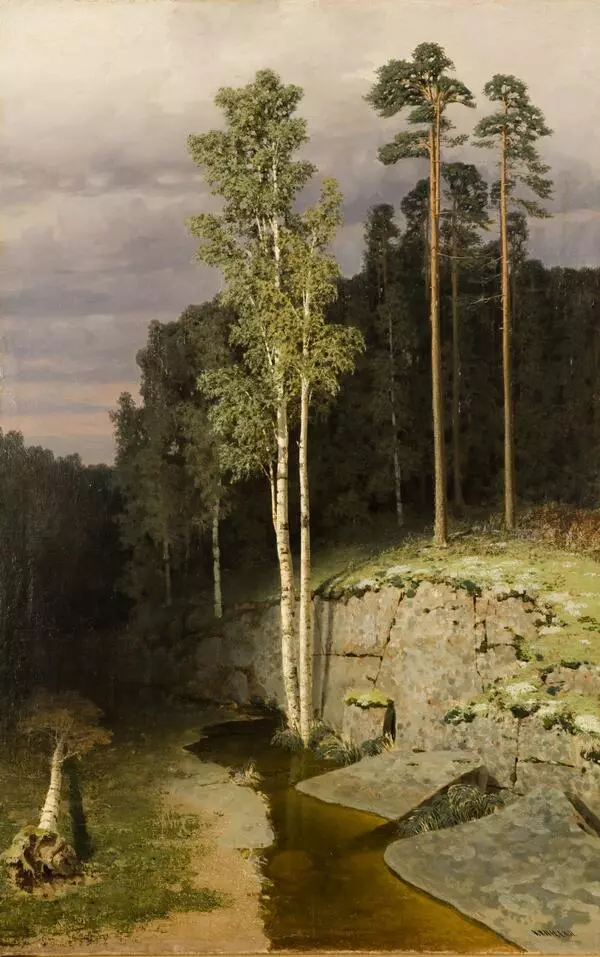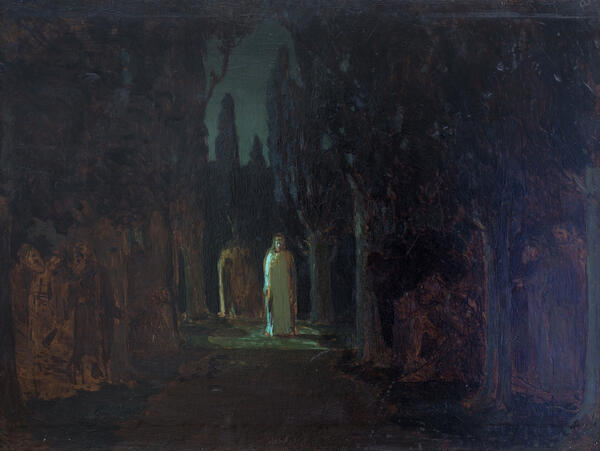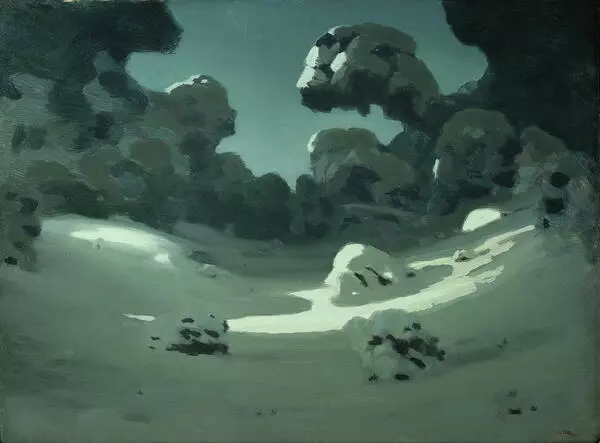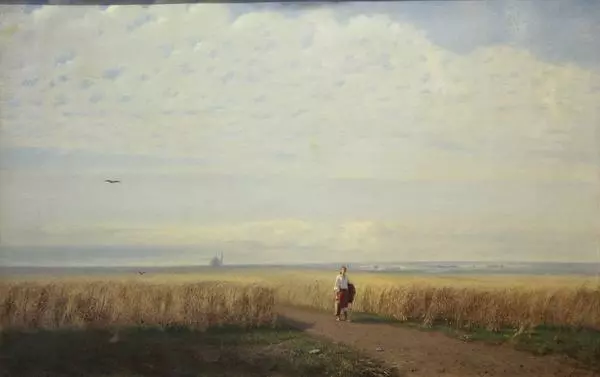The collection of the Stavropol Krai Museum of Fine Arts contains two chamber landscapes by Arkhip Kuindzhi: one depicts winter forest, the other one — evening steppe. Before that, both sketches were in the Russian Museum in St. Petersburg where they were donated by Arkhip Kuindzhi Society of Artists. The Society, founded in 1909 by Kuindzhi himself, brought together artists from St. Petersburg, mainly landscape artists, and supported them. In 1930, Arkhip Kuindzhi Society of Artists teamed up with other societies to form the Workshop of Artists, and the works of the collection were given to various state collections and museums.
Twilight in the Steppe is a small sketch the exact date of creation of which could not be found out. The painting shows an endless steppe with ripe wheat. In the foreground, Kuindzhi painted burdocks and large field flowers that reflect the waning sunlight. In the skyline, there is a mound. In the evening sky, the clouds stand out that the setting sun tinged with a rosy flush.
The method used by Kuindzhi in his work, and in this sketch in particular, was called optical decorativism. The artist strived to convey the light, contrasts of light and shadow with extreme illusionism - apparent volume, touchableness of objects on the canvas. In his works, the paint didn’t bring color, but gave impression — be it a moonlit night on the Dnieper or pink sunset rays as in Twilight in the Steppe.
Ilya Repin called Arkhip Kuindzhi the artist of light — it is a brief but exhaustive description of his works. Kuindzhi was born in Mariupol District to a cobbler’s family. He lost his parents early and did not get a systemic art education. Kuindzhi spent two months in Ivan Aivazovsky’s studio and worked as a retouch artist in a photo studio for a long time. In 1865, he decided to enter the Academy of Arts, but he could only become a non-matriculated student in 1870. In 1874, Kuindzhi joined the Itinerants as an exhibitor, and in 1875, he became a full member of the Society.
Together with Levitan, Polenov and Shishkin, Kuindzhi represented the Russian school of landscape painting. The hard way of becoming an artist allowed the Kuindzhi to find his own genuine style in the landscape painting which he was able to oppose to the lyricism of the Itinerants that appeared in the late 19th century. In 1880, at the mono exhibition of the painting Moonlit Night on the Dnieper, he spotted the canvas with a beam of light from an electric lamp in a darkened exhibition hall — the moonlight looked extremely realistic.
Twilight in the Steppe is a small sketch the exact date of creation of which could not be found out. The painting shows an endless steppe with ripe wheat. In the foreground, Kuindzhi painted burdocks and large field flowers that reflect the waning sunlight. In the skyline, there is a mound. In the evening sky, the clouds stand out that the setting sun tinged with a rosy flush.
The method used by Kuindzhi in his work, and in this sketch in particular, was called optical decorativism. The artist strived to convey the light, contrasts of light and shadow with extreme illusionism - apparent volume, touchableness of objects on the canvas. In his works, the paint didn’t bring color, but gave impression — be it a moonlit night on the Dnieper or pink sunset rays as in Twilight in the Steppe.
Ilya Repin called Arkhip Kuindzhi the artist of light — it is a brief but exhaustive description of his works. Kuindzhi was born in Mariupol District to a cobbler’s family. He lost his parents early and did not get a systemic art education. Kuindzhi spent two months in Ivan Aivazovsky’s studio and worked as a retouch artist in a photo studio for a long time. In 1865, he decided to enter the Academy of Arts, but he could only become a non-matriculated student in 1870. In 1874, Kuindzhi joined the Itinerants as an exhibitor, and in 1875, he became a full member of the Society.
Together with Levitan, Polenov and Shishkin, Kuindzhi represented the Russian school of landscape painting. The hard way of becoming an artist allowed the Kuindzhi to find his own genuine style in the landscape painting which he was able to oppose to the lyricism of the Itinerants that appeared in the late 19th century. In 1880, at the mono exhibition of the painting Moonlit Night on the Dnieper, he spotted the canvas with a beam of light from an electric lamp in a darkened exhibition hall — the moonlight looked extremely realistic.
